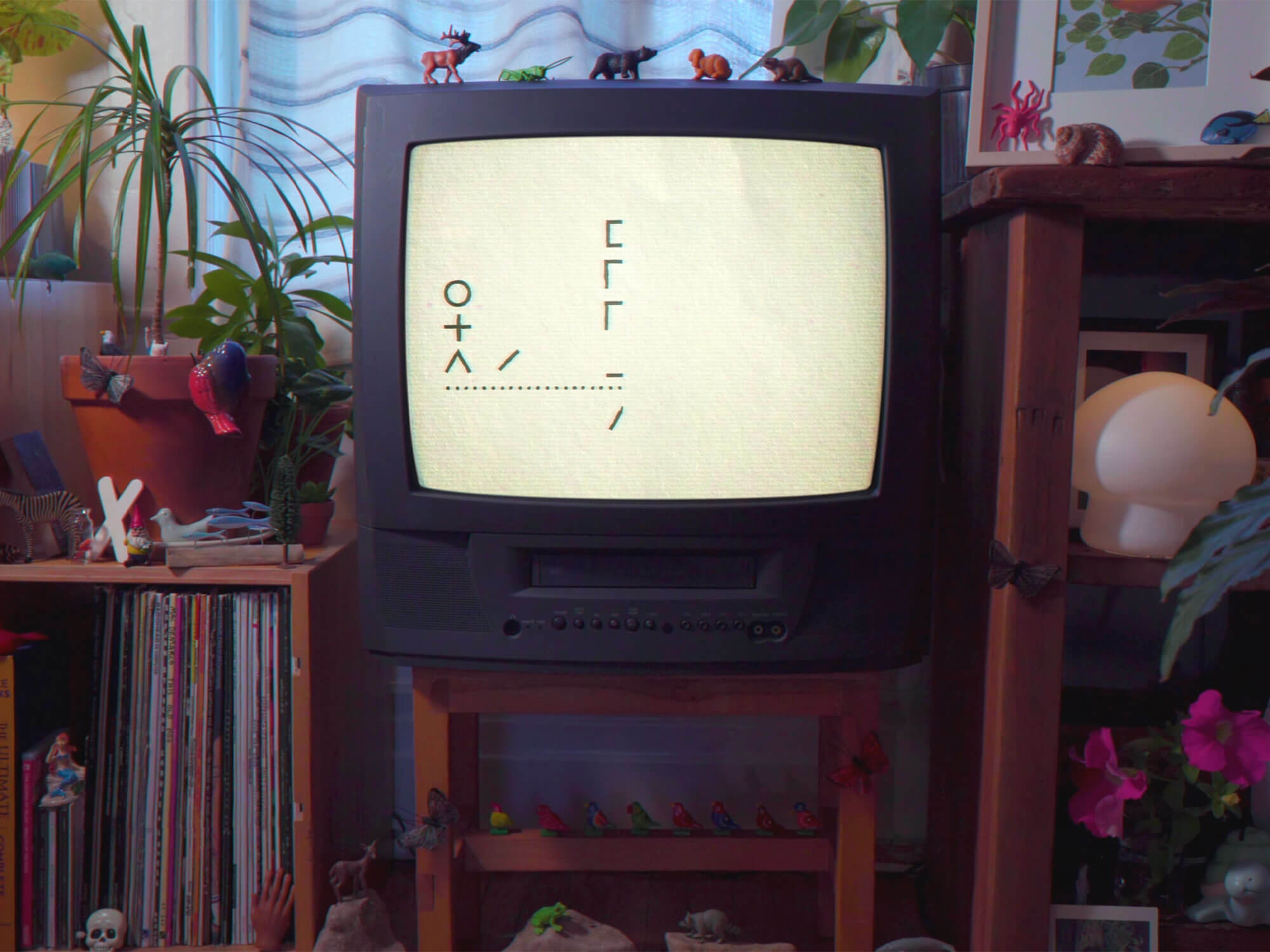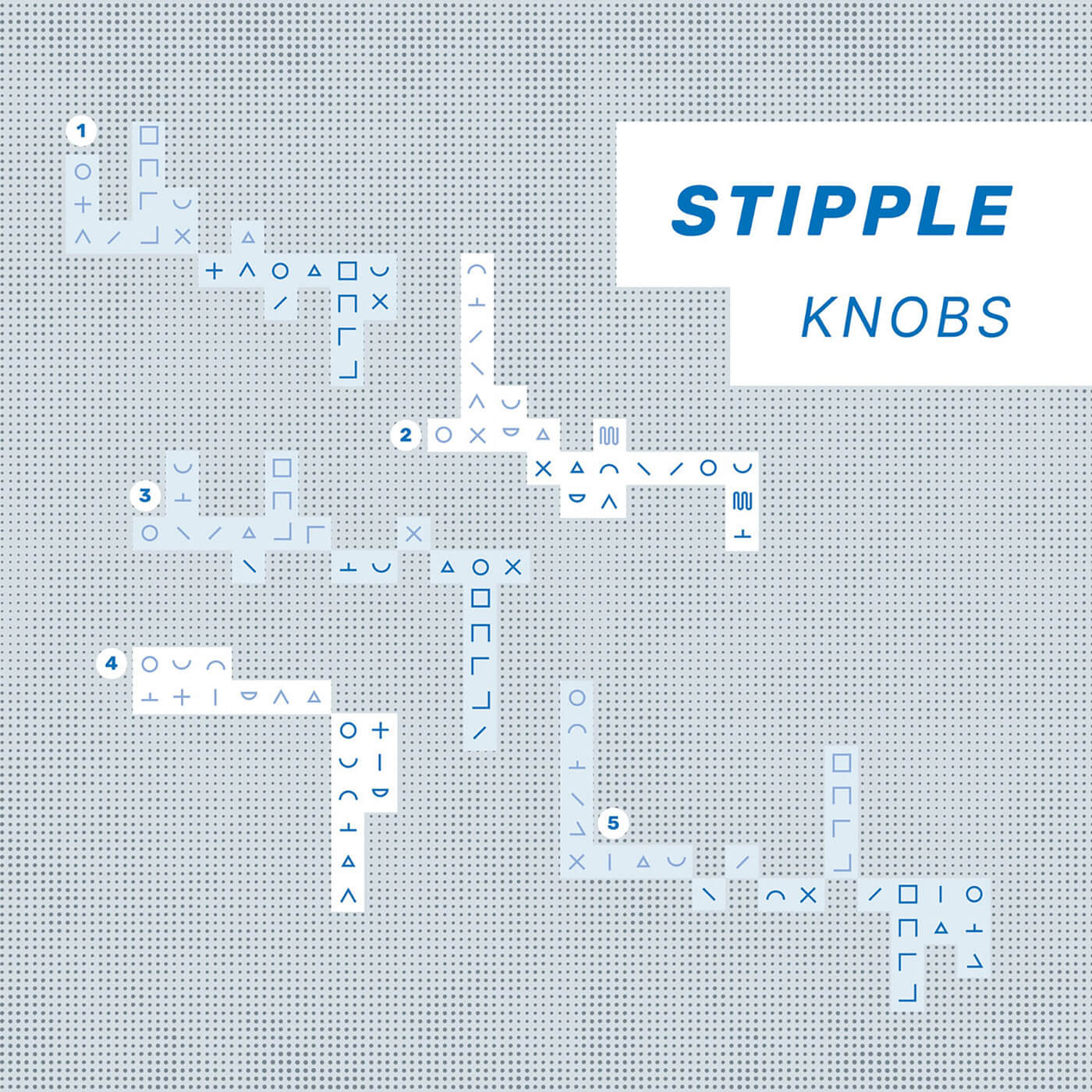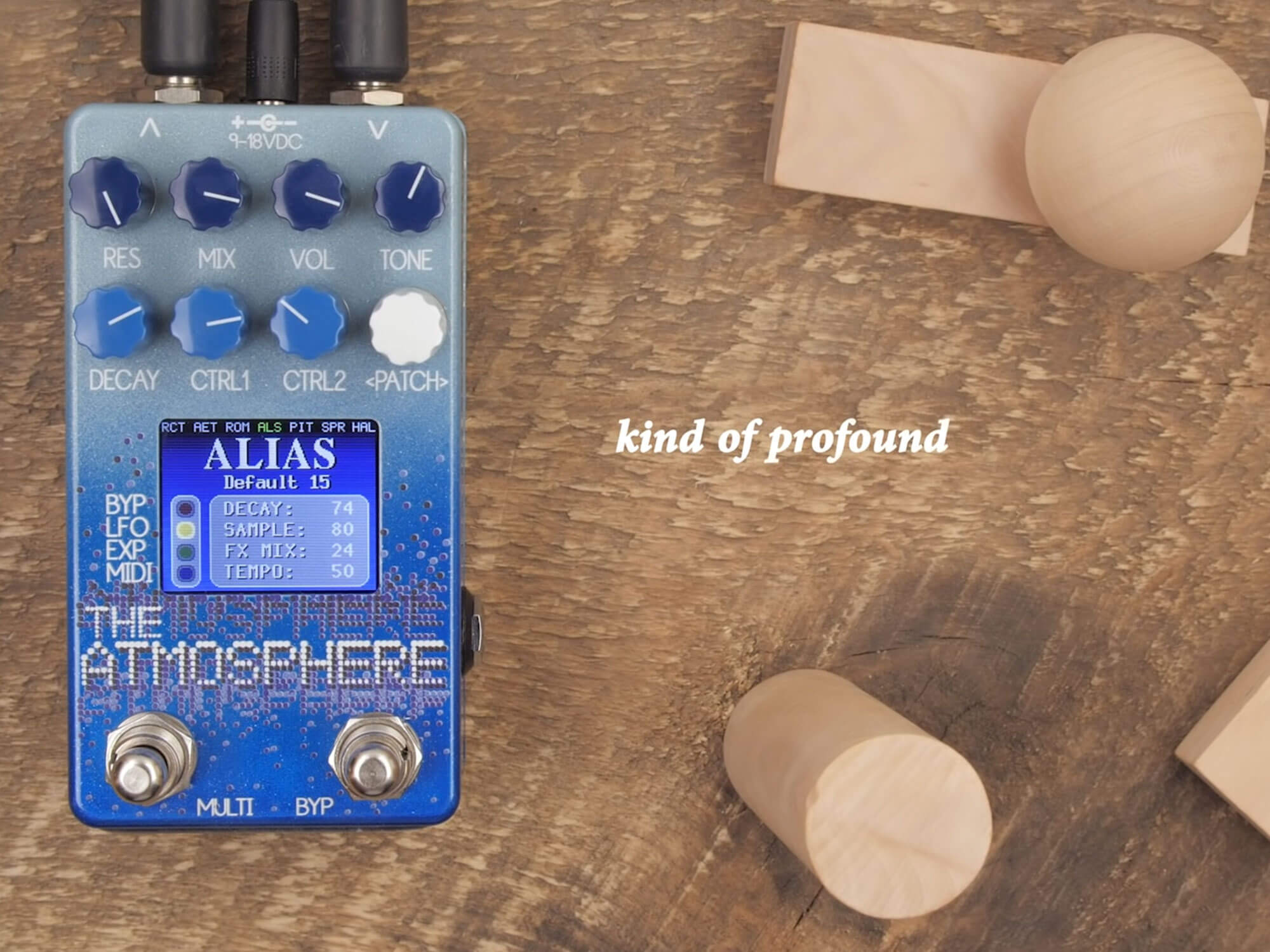Related Tags
From pedal demos to an album: Scott Harper explores his debut album as Knobs, Stipple
Scott also talks collaborating with Chase Bliss, writing on an isolated island and why he loves improvising his music.

Image: Knobs YouTube
It’s fair to say Knobs has always gone above and beyond the brief of a pedal demo channel. Scott Harper’s warped tonal explorations of pedals are as much of a joy to listen to as his off-kilter editing is to watch. Now, his musical vignettes played on guitar, modular synths and other odd instruments have been condensed into an album: Stipple.
- READ MORE: “I kind of hate my guitars”: Ezra Furman on strangling her six-strings and searching for community
Stipple will sound familiar to viewers of the Knobs channel – but now Scott Harper’s musical vignettes stand separate from the purpose of making you really, really want a weird modulation pedal. They still remain, at their core, the sound of Harper improvising through a lot of pedals and offbeat gear: the bedroom-loop-jam elevated to beautiful, nostalgic heights. �“I think it’s very okay to make music just for yourself,” Scott tells us over Zoom, which we’re pleased to hear: Knobs’ videos have inspired countless guitarists to put together the freakiest signal chain they can imagine and noodle away for countless unrecorded hours.
“I was pretty content doing that, and not really thinking about, like, the end product, or whether anything I was doing was a song, or was performable or reproducible. None of that even came to mind,” he adds. But evidently, something changed that made Scott want to put the sounds he made in his studio out there. In his case it was simple curiosity. “I reached a point where I just wanted to know what that would be like. That’s it,” he says, matter-of-factly.
But there’s a big difference between what works to demo a pedal and what stands up to repeated listens. This was the challenge at the core of the record: “using that same kind of very free and personal improvised format and turning it into a release. Everything you hear in the demo videos is improvised. I’ve completed music and other forms with other people in my life, but never in that style.”
There’s a lot of freedom in the kind of music Scott makes – often without tempo, with a focus on texture more so than structure. But working without the constraints of traditional song craft just added to that core challenge. “It made things really hard,” he says. “But I just wanted to know what that would sound like, to have a nonsensical challenge at the heart of the record. I wanted to know, can I make songs with distinct beginnings and ends and middles, without a tempo to fall back on? Songs that feel shapeless and formless, but then when it all comes together, they make sense. That’s what I was chasing.”
Chamber orchestra
To augment the improvisations further, Scott worked with chamber orchestra of sorts, adding clarinet, Wurlitzer, double bass and more. “I knew four local musicians who would play Pet Sounds by the Beach Boys in full, as a chamber orchestra. So I got really fixated on them being able to support what I was doing – and they’re all improvisers. So at that point, there was not a lot of other instrumentation on the record. I brought in each of the songs in the state that they were in and we were in the studio together and just did a whole day of improvising overtop of that.”
“The majority of the ideas were definitely from my own spur of the moment stuff. When I got the other musicians in, that was the point in the process where I was getting a little bored of myself. I needed some outside input, because I was finding that at that time, when I was adding layers to what I was making, there wasn’t enough contrast in those layers. And I guess that was also part of the challenge: this is definitely being released as a solo record, but so many of the sounds on it are from other people. I think that was also just a good check in with myself that I didn’t have to make all the sounds myself, that wasn’t important. It was a good way to get away from that.”
It’s a neat parallel to the original Knobs concept – Scott has spoken about it being an “egoless” review channel. “Knobs was never supposed to be a person. People just call me that now, but that was never the idea,” Scott says.
Before the band joined the album, Stipple was, however, still very much Scott’s own thing – to the point where most of the base of the album was recorded on a literal island. Toronto Island, to be exact. “There’s a little residency there. I was staying in an old school portable. And I did that twice over the course of recording this, for a month each.”
We’re curious as to how truly isolated it feels – despite being an island, it is still quite accessible, rather than some windswept crag in the middle of the ocean, it’s a stone’s throw from the city of Toronto. “In the summer, it doesn’t feel like an island. But in the winter, when I was there, it was probably the quietest month of my life. I didn’t really see anybody.”
“I think I would have been embarrassed to do something like that on purpose. It’s such a thing at this point. But I do love being alone. I love quiet time. So in that sense, like, I really did embrace it. It’s a whole school that they turned into an artists’ centre – there were visual artists and writers there I could have interacted with. And I didn’t want to. I really did keep to myself during that time. I’d say it was good and bad. I think having outside input, I learned more and more, is essential for me. But at the time, I didn’t want it. I just wanted to solve everything myself.”
Blooping
Unsurprisingly, given that Scott helped design it, there’s a lot of the Chase Bliss Blooper on Stipple. “I’ll use Blooper as a hands-on editor to try and just figure out what I’m not satisfied with in a performance, because the loops are improvised. I use a lot of layers, so sometimes there’s things I want to be slightly different. And that’s where, for me, Blooper is a lot of fun: you can add a lot of bizarreness to an otherwise straightforward guitar loop. And edit it while staying in a very physical, in the moment place – instead of loading it onto a computer. If I’m already editing a song and I need to record some extra layers, they’re always going to be so bad – because my brain is fixated on a computer by that point, I’m thinking ‘like an editor.’”
That was one of the ways in which Scott combated DAW-induced creative block. The other? “One of the things I really wanted to do with this album was to use a lot of old recordings that I didn’t have a purpose for, that’s partly why it ended up being such a mashup of things, I would have all these snippets. I would occasionally reach a point in a song where I found my attention starting to waver. But by then I was already thinking like an editor, so trying to record something new to match with it always kind of wound up boring me. Instead I organised all my old recordings by key, and figured out which ones would blend naturally with the part that needed something else.”
As for getting things going in the first instance, there was one synth with that job. “The ‘song starter’ for me was the Organelle from Critter And Guitari. I really like that thing, and I was often running it through Blooper, too. That would always be my fallback when things just weren’t interesting as a starting point – the Organelle would more often than not get me somewhere that I wanted to develop.”
There’s modular, too, on the album. “But with the modular synths, when I was recording those starting points I didn’t really understand them. So what you hear within the album is me learning how to use modular. I would record some overdubs later where I knew what I was doing, but there’s a bit of both in there. So those elements in particular are pretty chaotic.”
So aside from synths and pedals, what amps and guitars are in the mix? “My old faithful guitar that I’ve never seemed to be able to leave behind is a Danelectro Dead On 67. It wasn’t my first electric guitar, but it was the one where I became comfortable. I was pretty sure that I would just find a better guitar eventually, but I didn’t realise that I was so dependent on it. And then I got another one, a custom guitar made by Baranik Guitars, finished in the same pale blue shade as Blooper. That was made to be an improved version of the Danelectro. So in that sense the only two guitars I use are a version of the same guitar.”
“And then for amps, a lot of the guitar on here was recorded through a Fender blues Junior. Now I have my amps from a company called Otis, a smaller company that I know personally. And there’s no turning back now, from that. The one I use is called the Trudeau. That’s definitely just the happiest I’ve ever been playing a guitar, is through that amp with my crappy old Danelectro.”
Chasing bliss
The Blooper, made by Chase Bliss, is the most high-profile result of Knobs’ collaboration with the company. But the friendship between Chase Bliss’ Joel Korte and Scott Harper started long before the Blooper.
“It was gradual. I did some videos for them, just like anyone else. I guess the one difference is, pretty early on I made a documentary piece on Joel – I went to Minnesota and filmed him at his home, and just what the state of the company was. And then we went to Nashville together. And it was just a very fast friendship. So from that point on, anything involving travel, I would generally come along and film. We just got really familiar with each other, and at some point collaborating just made sense.

“I’m not an employee at the company. It’s still a ‘Knobs x Chase Bliss collaboration’. But I do all kinds of stuff there, which takes up most of my time now.
“It forces me to get my shit together, basically. I can’t live in a purely creative state of mind, because it’s manufacturing, right? We’re making creative products, but we’re making them from scratch. So a lot of it is just the same as, say, manufacturing a water bottle or something. There’s things that just need to get made and shipped.
“In the beginning, Chase bliss was only analogue pedals. And I didn’t have – I still don’t really have – too many like ideas in the analogue domain, I always want to do stranger things that are digital. But once Chase bliss started making digital pedals, then we worked together on the Blooper. At that point, I thought it would kind of just be like an artist signature pedal, in the sense that I wouldn’t really work [laughs]. Do you know what I mean?
“I mean, the way I’ve explained it to people in the past is that I made a concept. So I made a document that was like ’this is what the looper should do and why’. I thought I was gonna slide that under Joel’s door, and then be like, ’seeya in testing!’ – but that never happened. I submitted the concept. And then it was just: ‘Okay, so what happens next?’
“I had to quickly figure out whether I was a product developer or not, basically. It just felt very easy. Not easy. That’s so – it felt natural. Because in some ways, you’re doing the same thing as when you’re setting up your studio or pedalboard. As long as I could keep the end goal in mind, then it was easy enough to decide what needed to be done, with lots of help from other people. That’s all to say that it turned out that working on pedals together actually made sense. Even though I had no training and I wasn’t an engineer, it was still useful having me around throughout that process. So then we just kept doing it.”

The Blooper, as a piece of gear, embodies a lot of Scott’s musical philosophy – more than just a looper, it lets you really fuck with the things you’ve recorded in grainy, weird, digital ways. Even looping a single note with Blooper lets you use the pedal as an idiosyncratic instrument. “I usually credit my friends for that musical philosophy,” Scott says. “I was not much of a guitar player. I got started with music splicing samples together and stuff like that – I guess that’s my way of explaining why I sucked at guitar. So when I made my first batch of musician friends, they were all way better at guitar than me and they had fully formed ideas about what was interesting musically. So that’s where I absorbed the idea of improvisation. I’ve always been fascinated with it – being able to do something new instead of playing the same song over and over again. Making that a core part of your musical identity, to me, at least, excuses you from some of the more mundane parts.”
For Scott improvising becomes a way of keeping pure creation alive within the music. “I always used to wonder how a very successful band felt playing the same song 500 times. I’d assume that it wouldn’t feel great – but, I don’t know, I’m obviously not that person. But that’s why I wanted to commit to making things from scratch every time. Always making something instead of trying to recapture. It also seems, I guess, more honest. What you’re doing at any given time is more ’true’.
“I was speaking to a singer who improvises yesterday about something similar – there, you’re even more vulnerable, you have to choose words when you’re improvising, and then you’re really putting yourself out there. You don’t have the ability to plan everything out and present your polished, perfect self, you just have to do your best at any given moment. For me that’s such a shortcut to what your actual musical personality is instead of the personality you want to present, you know, the one you think would be impressive or interesting. It’s what you are.”
Stipple is out now, and can be purchased here.
